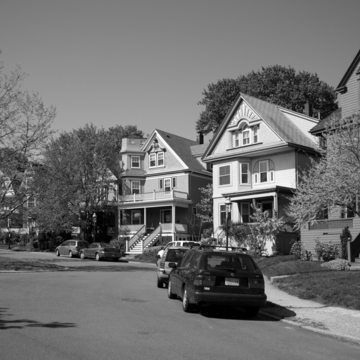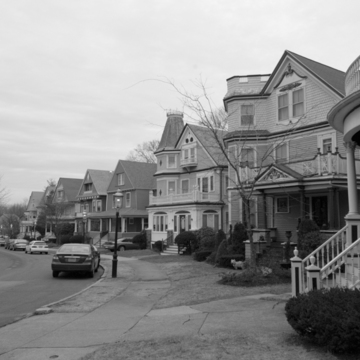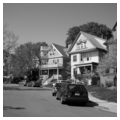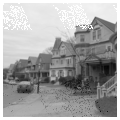A showcase of late-nineteenth-century suburban residential architecture, Melville Avenue was laid out in the tradition of a wide boulevard with houses set back on large open lots, many having carriage barns. For the Reverend
Very quickly the Queen Anne style, susceptible to a wider variety of ornamental treatments, dominated the architectural character of the street. In 1882, Arthur H. Vinal designed for himself the street's most distinctive house at 35 Melville Avenue. Best known for his Romanesque designs produced as a city architect, Vinal incorporated Romanesque detailing in his Queen Anne house. Vinal also designed the neighboring houses at numbers 29, 35, 37, and 39, which along with number 33 (1886, L. Underwood) constitute a superb enclave of Queen Anne houses with varied materials and picturesque massing. Built between 1889 and 1894, possibly for Hester Brown, 28 Melville Avenue is a rare example of the influence of British architects, such as Richard Norman Shaw, on small suburban residences in the Queen Anne style.
Intersecting with Melville Avenue lies Wellesley Park, an oval green laid out in 1897–1898 and surrounded by closely spaced Queen Anne and Colonial Revival residences. In the early 1900s, local residents acquired the land and gave it to the city to prevent attempts to develop the park. In this section of Dorchester, other developments arose around smaller green parks. Tremlett Square, Centerville Park, and Paisley Park (the last having lost its green space to pavement) all followed the Wellesley Park precedent.


















